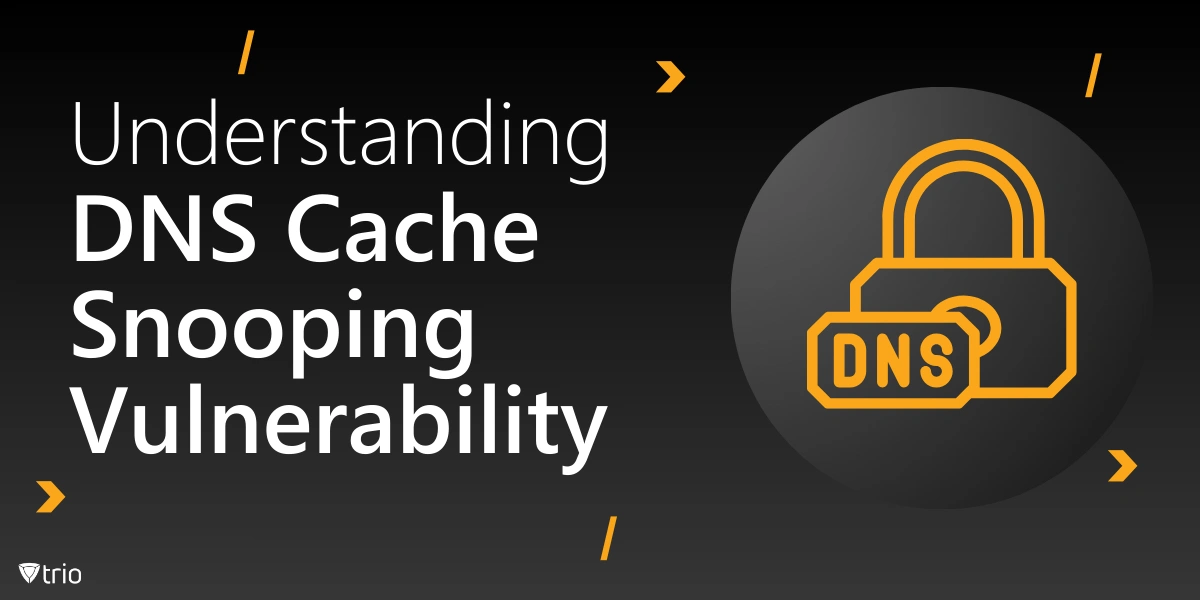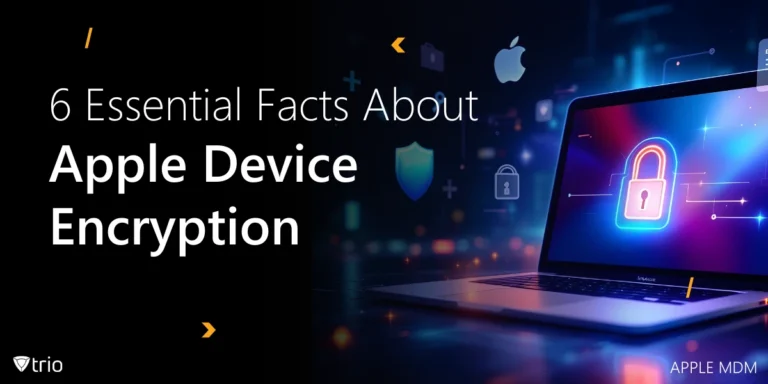DNS (Domain Name System) serves as the backbone of the internet, translating human-friendly domain names into IP addresses. While essential for seamless online experiences, DNS infrastructure is not immune to vulnerabilities. One such concern is DNS Cache Snooping, a lesser-known yet impactful vulnerability that can expose sensitive information about user behavior and network activities. In this blog, we will dive deep into what DNS Cache Snooping is, how it works, its risks, and how organizations can protect themselves.
What is DNS Cache Snooping?
DNS Cache Snooping, also known as DNS Cache Probing, occurs when an attacker queries a DNS resolver to determine whether a specific domain query is already cached. This vulnerability exploits the resolver's ability to reveal whether a domain has been recently accessed. The attacker does not need direct access to the target network; they can query public resolvers to gather insights into browsing habits, internal services, or frequently accessed domains.
How DNS Cache Snooping Works
When a DNS resolver caches a domain query, it temporarily stores the IP address associated with that domain to improve response times for subsequent requests. An attacker can exploit this caching mechanism by sending queries to the DNS server with a 'non-recursive' flag, asking whether a specific domain is cached. If the server responds affirmatively, it indicates that someone on the network has recently accessed that domain. In other words, the DNS server allows cache snooping vulnerability fixes.
For example:
- The attacker queries a public DNS resolver for example.com.
- If the resolver responds with an immediate answer, the attacker knows the domain was recently queried by someone.
- If no answer is provided, it means the domain was not cached, implying no recent activity.
Risks Associated with DNS Cache Snooping
DNS cache snooping is a vulnerability management issue where an attacker queries a DNS server to determine whether specific domain names are already present in its cache. The primary risk lies in the exposure of sensitive information about an organization's online activities. For example, an attacker could identify which services, applications, or websites an organization frequently accesses. This information can then be used for reconnaissance in a larger cyber-attack, such as phishing, social engineering, or targeted ransomware campaigns.
Another significant risk is privacy invasion. By identifying cached DNS entries, attackers can infer user behaviors, including the timing and frequency of access to certain services. For example, knowing that an organization frequently queries a particular cloud service could give attackers insight into critical infrastructure dependencies, which might then be targeted in follow-up attacks. This kind of metadata can also be sold on the dark web to malicious actors.
One critical vulnerability often exploited in DNS cache snooping is the DNS server recursive query cache poisoning weakness, where attackers manipulate the DNS cache to serve incorrect or malicious data to end-users. In cache poisoning attacks, the attacker manipulates cached DNS entries to redirect users to malicious websites. The snooping phase provides the reconnaissance needed to execute such an attack effectively. If the server is misconfigured or lacks adequate security controls, it becomes an easy target for these exploits.
Finally, DNS cache snooping can undermine compliance with data privacy regulations such as GDPR or HIPAA. Organizations that inadvertently expose user metadata or browsing behavior may face hefty fines and reputational damage. Therefore, understanding and mitigating DNS cache snooping risks should be a priority for IT administrators and cybersecurity teams.

Real-World Scenarios of DNS Cache Snooping Attacks
A cybercriminal targeted a financial institution by snooping on its DNS cache to identify frequently visited internal and external services. Once the attacker discovered which cloud services the company used, they launched phishing campaigns disguised as trusted login portals, tricking employees into revealing credentials. This scenario underscores how DNS cache snooping serves as a critical reconnaissance phase for larger attacks.
A more subtle example comes from espionage campaigns conducted by state-sponsored cyber groups. These attackers use DNS cache snooping to gather intelligence about government agencies or large enterprises. By identifying frequently accessed domains, they could infer critical partnerships, supply chain dependencies, or even project timelines, giving them a strategic advantage in cyber-espionage campaigns.
In many real-world cases, a remote DNS server vulnerable to cache snooping attacks has allowed attackers to map out an organization's internal network activity, leading to significant data exposure and potential breaches. For example, attackers discovered cached domains of remote access tools and used brute-force techniques to gain unauthorized access. These real-world examples of remotely snooping on DNS server cache vulnerability highlight the wide-ranging consequences of DNS cache snooping, from corporate espionage to full-scale ransomware attacks.
How to Detect DNS Cache Snooping
Detecting DNS cache snooping often starts with monitoring and logging DNS query activities. By analyzing patterns in DNS traffic, administrators can identify unusual or repeated queries for cached domain names. If a client is repeatedly querying for various domains without legitimate reasons, it could indicate snooping activity. Network traffic monitoring tools and DNS query analyzers can help flag these anomalies.
Another detection method involves reviewing query source patterns. If queries are originating from external IP addresses not associated with the organization's network, it might suggest external actors attempting to snoop on cached entries. Combining this analysis with geolocation tools can also help identify suspicious activity originating from regions not associated with the organization.
DNS servers configured with verbose logging can also provide critical insights into snooping attempts. Logs that capture query timestamps, source IPs, and the frequency of access to specific domains are useful for detecting patterns of malicious activity. By regularly auditing these logs, administrators can spot repeated access to domains that are unlikely to be queried legitimately.
Lastly, using intrusion detection systems (IDS) and intrusion prevention systems (IPS) can add an extra layer of protection. These tools can flag DNS queries that match snooping attack signatures. By creating rules specifically targeting DNS query behavior, IT teams can quickly detect and respond to potential snooping attempts before they escalate into more significant breaches.
Best Practices for Mitigating DNS Cache Snooping Vulnerabilities
One of the primary defenses against DNS cache snooping is proper DNS server configuration. Recursive DNS servers should not allow unauthorized external users to query their caches. Instead, they should restrict recursive queries to trusted IP addresses or internal networks. Disabling open recursion ensures that attackers cannot query the server for cached entries.
Another essential best practice is to enable DNS query logging and regular auditing. Logs provide critical information about DNS activity and can reveal suspicious patterns indicative of snooping attempts. Administrators should regularly review these logs and set up alerts for any anomalous activities. Automated monitoring tools can help streamline this process.
Implementing rate-limiting mechanisms on DNS servers is also effective. By limiting the number of DNS queries allowed from a single IP address within a specific timeframe, organizations can prevent attackers from launching mass DNS snooping attempts. This approach reduces the attack surface and makes large-scale snooping infeasible.
Finally, using DNSSEC (Domain Name System Security Extensions) can add a layer of cryptographic security to DNS queries. DNSSEC ensures that DNS data is authenticated, reducing the risk of cache poisoning following snooping attacks. Combined with network-level controls like firewalls and IDS/IPS systems, these measures create a robust defense against DNS cache snooping vulnerabilities.
Role of DNS Security Solutions in Prevention
DNS security solutions play a critical role in preventing DNS cache snooping vulnerabilities by offering advanced tools and configurations designed to detect and block suspicious activity. These solutions often include DNS firewalls that monitor and filter DNS traffic in real time. By blocking unauthorized external DNS queries and identifying unusual query patterns, these tools can effectively prevent snooping attempts. Additionally, they can enforce strict access controls to limit which devices and IP addresses can interact with the DNS server, reducing the attack surface significantly.
Another key feature of DNS security solutions is the implementation of DNSSEC (Domain Name System Security Extensions). DNSSEC ensures the integrity and authenticity of DNS data by using cryptographic signatures, making it nearly impossible for attackers to manipulate or poison DNS cache entries after snooping. Without DNSSEC, even well-configured DNS servers remain vulnerable to cache poisoning attacks, which often follow a successful snooping attempt.
These solutions also provide robust logging and monitoring capabilities. Detailed DNS query logs allow IT admins to track query behavior, detect anomalies, and identify patterns indicative of snooping attacks. Many DNS security tools come with built-in analytics and threat intelligence feeds, allowing organizations to stay updated on known attack vectors and malicious domains. This proactive approach helps in identifying potential attacks before they escalate.
Finally, DNS security solutions enable automated responses to detected threats. For example, if a snooping attempt is detected, the system can automatically block the suspicious IP address or alert security teams for immediate investigation. This level of automation ensures rapid response times, reducing the window of opportunity for attackers and minimizing potential damage.
How Mobile Device Management Solutions Can Help with DNS Cache Snooping Vulnerabilities
Mobile Device Management (MDM) solutions contribute to mitigating DNS cache snooping vulnerabilities by ensuring secure configurations on mobile devices and managing their DNS settings. With the growing number of mobile devices accessing corporate networks, each device represents a potential entry point for DNS-related attacks. MDM solutions enforce security policies, ensuring that all connected devices use trusted DNS servers and do not allow unauthorized recursive queries. By centralizing DNS policy enforcement across all mobile endpoints, MDM reduces the risk of misconfigured devices exposing the network to snooping threats.
Another advantage of MDM solutions is their ability to monitor and log DNS query activities originating from mobile devices. These tools provide IT administrators with visibility into the DNS traffic generated by each device, helping identify suspicious behavior or queries directed at unauthorized DNS servers. Alerts can be triggered if mobile devices attempt to connect to external or malicious DNS servers, enabling IT teams to address the issue promptly.
MDM solutions also enforce network segmentation and device isolation, preventing compromised devices from accessing sensitive network resources. If an attacker attempts DNS cache snooping through a mobile device, the MDM system can restrict that device’s access to DNS servers, reducing the chances of successful snooping attempts. This containment strategy ensures that threats are localized and cannot spread across the network.
Lastly, MDM platforms facilitate secure remote management and updates for mobile devices. IT teams can ensure that mobile devices are always running the latest operating systems and security patches, including updates related to DNS vulnerabilities. This reduces the risk of exploitation due to outdated software or configurations, making MDM a vital layer in the defense against DNS cache snooping attacks.
Conclusion
DNS Cache Snooping may not always make headlines, but it remains a potent risk in the realm of cybersecurity. Organizations must remain vigilant, monitor DNS traffic, and adopt best practices to mitigate this vulnerability. By securing DNS infrastructure, implementing access controls, and leveraging modern security solutions, businesses can protect their systems, data, and user privacy from DNS-based attacks.
Protect your organization from DNS vulnerabilities and ensure robust mobile device security with Trio's advanced MDM solutions. Take control of your DNS policies, monitor device activities, and prevent unauthorized access with ease. Start your free trial now and experience smarter, safer network management with Trio!
Get Ahead of the Curve
Every organization today needs a solution to automate time-consuming tasks and strengthen security.
Without the right tools, manual processes drain resources and leave gaps in protection. Trio MDM is designed to solve this problem, automating key tasks, boosting security, and ensuring compliance with ease.
Don't let inefficiencies hold you back. Learn how Trio MDM can revolutionize your IT operations or request a free trial today!





